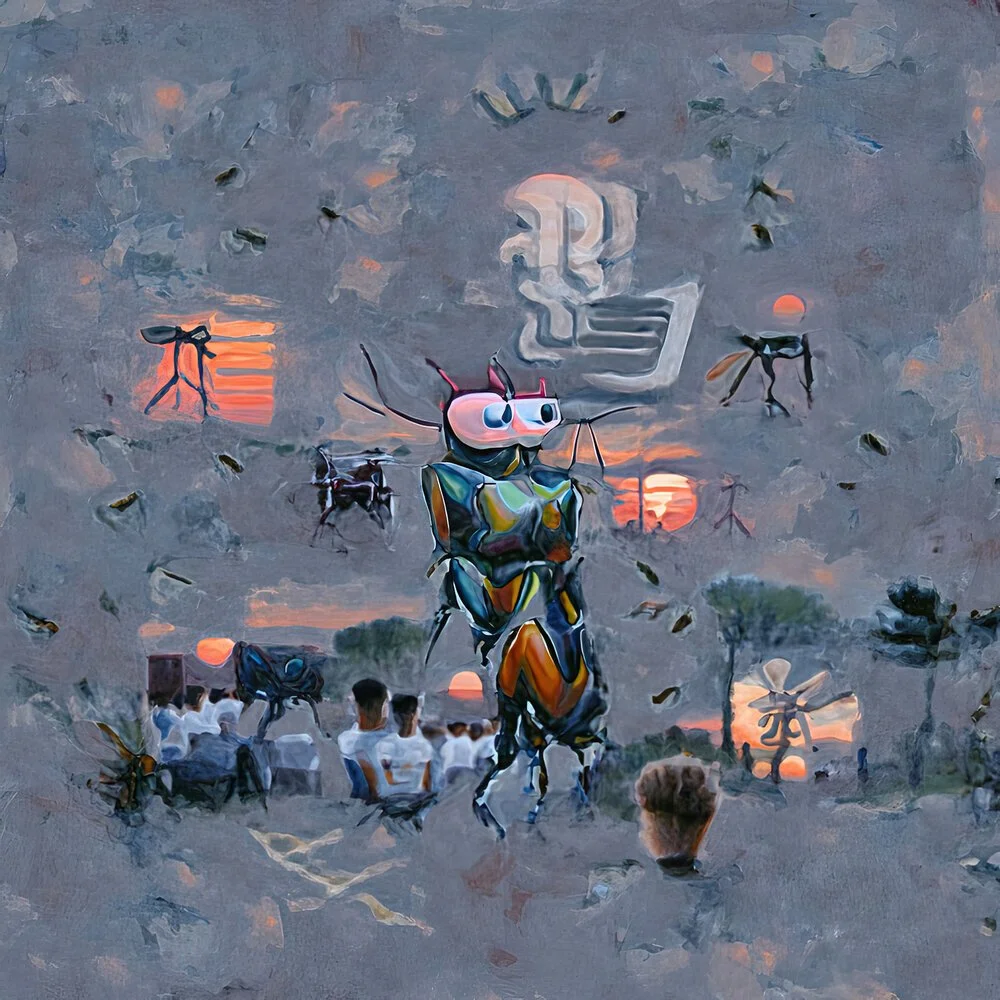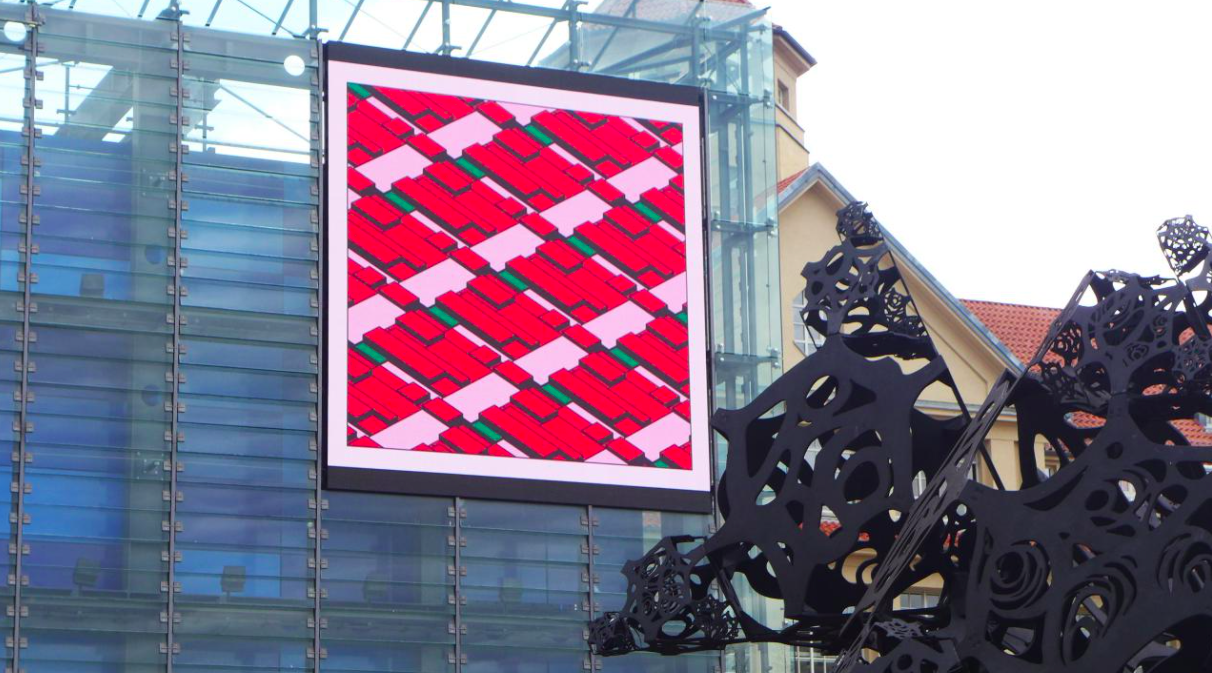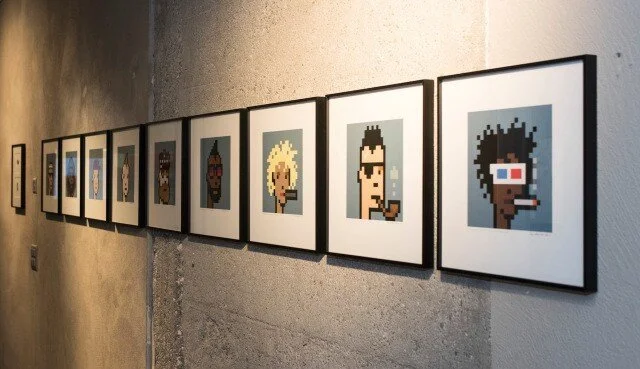Bitcoin Conference Miami | DECENTRALIZATION: A look into the future of Bitcoin, Decentralized Finance and Society.
Tickets available HERE.
A look into the future of Bitcoin, Decentralized Finance and Society.
Location
The LAB Miami
400 Northwest 26th Street
Miami, FL 33127
United States
About this event:
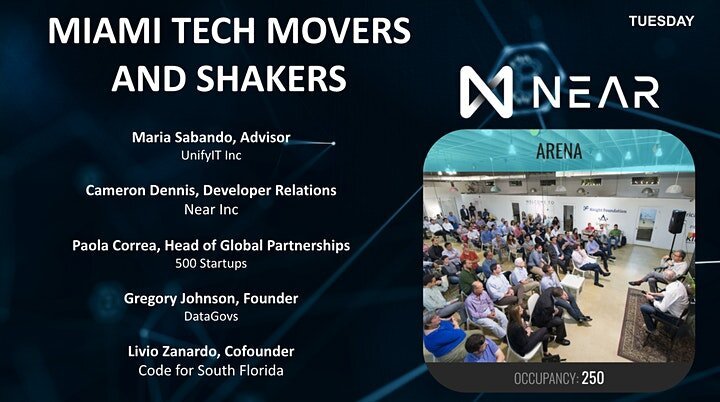
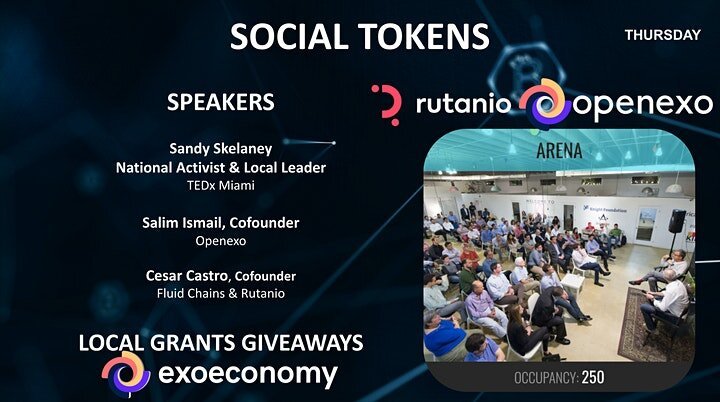
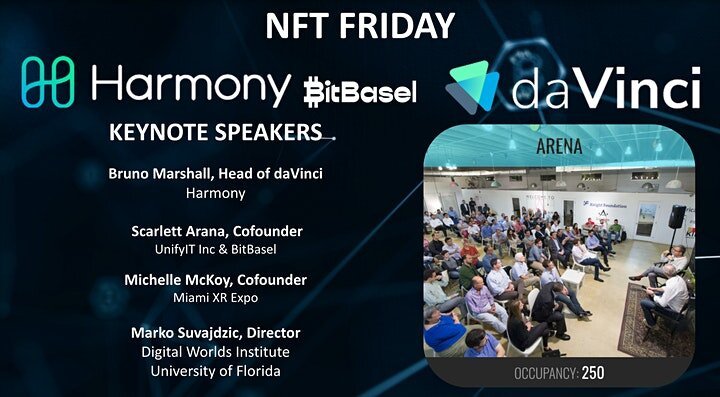
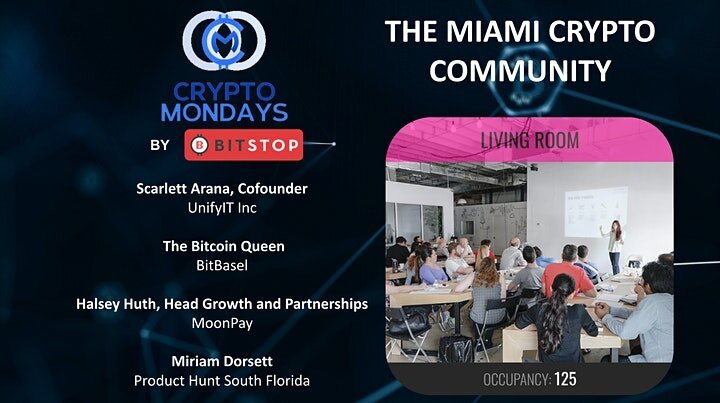
The Bitcoin Center NYC
RE: HUMANISM ART PRIZE 2. INTERVIEW WITH ENTANGLED OTHERS STUDIO AT ESPOARTE
Interview with ENTANGLED OTHERS STUDIO by Ennio Bianco
Re:Humanism 2, the great exhibition between Contemporary Art and Artificial Intelligence, is currently underway at MAXXI in Rome.
Conceived and realized by the cultural association Re:Humanism, curated by Daniela Cotimbo, the project develops in two moments: an international call for artists and the exhibition of the eleven finalist artists of the call. Ennio Bianco joined the winners of the second edition of the Prize, the Berlin-based duo Entangled Others Studio, composed by Feileacan McCormick and Sofia Crespo.
It was a difficult task to synthesize their research focused on ecology, nature and generative arts, with a focus on the production of new "more-than-humans "1 forms of presence and life in digital space.
Feileacan McCormick is a generative artist, researcher and former architect, heavily influenced by the development of new deep learning technologies and who has begun to reshape these meditations on nature by focusing on the biodiversity that enriches our Planet.
Sofia Crespo is a working artist with a huge interest in bio-inspired technologies. One of her main researches concerns the way organic life uses artificial mechanisms to simulate itself and evolve. This involves the idea that technologies are part of the very product of the organic life that created them and not a completely separate object. Crespo examines the similarities between AI image formation techniques and the way humans express themselves creatively and cognitively by recognizing their world. Her work questions the potential of AI in artistic practice and its ability to reshape our understanding of creativity...
Read the full interview:
https://www.espoarte.net/arte/re-humanism-art-prize-2-intervista-a-entangled-others-studio/
Sotheby's | Natively Digital: A Curated NFT Sale
‘Natively Digital is a collection of remarkable, unique artworks co-curated with Robert Alice. We showcase some of the earliest, raw NFTs built on pre-Ethereum chains alongside newer, complex NFTs that showcase the cutting edge technical innovation. From across four continents, we have sourced emerging crypto artists and the ‘old masters’ alike to exhibit their works. The landmark auction will provide an opportunity for collectors, curators, and enthusiasts to focus on the emerging ideas and aesthetics contained within these works. The Natively Digital auction will occur between June 3 and June 10 online at sothebys.com. - Sotheby’s
Discover more and browse lots HERE.
New York Times: The Untold Story of the NFT Boom
“It’s at 40.7 ETH,” FEWOCiOUS gasped. “That’s crazy.”
It was not quite 4 in the afternoon, and Victor Langlois, an 18-year-old cryptoartist, was at his desktop computer, watching a frenzied bidding war between two art collectors. Langlois — known by his art name FEWOCiOUS, or Fewo, to his friends and fans — was dressed in a white hoodie that he had designed, its arms covered in his own psychedelic art, including an eyeball and sunflower afloat in a blue sky. The room’s window had been covered with cardboard to keep things dark, and a string of blue LED lights shone down from the ceiling. As the numbers rose, Langlois nervously pulled his beanie off and on, running his hands through his poofy black hair.
The bidding war began a day earlier, on Feb. 7, on the auction site SuperRare, when an art collector called @thegreatmando1 offered Langlois 15 ETH for his digital painting “The Sailor.” ETH is short for Ether, a cryptocurrency much like Bitcoin. A single unit of Ether can be worth a lot: The day of the auction, 1 ETH was equal to $1,600. That meant @thegreatmando1 had offered $24,000 for Langlois’s artwork. But the sum jumped when another bidder, @yeahyeah, offered 18 ETH, or roughly $33,000. The two bidders pushed the price up and up, until by noon it reached $67,905.92.
Langlois was initially unaware of this remarkable news. He had slept in, after a long evening hunched over his iPad making more art. He only scrambled to check the bidding when a fellow artist pinged him: “Guess who got a $60,000 bid?”
Read more: at NYTimes
BREADCRUMBS: ART IN THE AGE OF NFTISM. New show at Galerie Nagel Draxler ft. Osinachi, Kevin Abosch, Anna Ridler, Rhea Myers and many more.
Opening today May 12th at Galerie Nagel Draxler: BREADCRUMBS: ART IN THE AGE OF NFTISM CURATED BY KENNY SCHACHTER
“ A “breadcrumb” or “breadcrumb trail” is secondary navigation scheme that reveals the user's location in a website or Web application. The term comes from the Hansel and Gretel fairy tale in which the children drop breadcrumbs to form a trail back to their home. The intent of the exhibit is to embrace and showcase a diverse and eclectic group of early and recent adapters employing NFTs on the Ethereum blockchain to create and disseminate digital art via a gallery context and into the wider stream of commerce. The show will put to rest two demonstrably false assumptions widely held by today’s art industry: that this is a fad, and/or not art. “
Full press release and link to the exhibition page HERE.
Text credit Kenny Schachter / Galerie Nagel Draxler
Artists Featured:
Kevin Abosch
Olive Allen
Darren Bader
Eva Beresin
Tracey Emin
Sarah Friend
Rulton Fyder
Rhea Myers
Osinachi
Max Osiris
DotPigeon
Anna Ridler
Robness
Koichi Sato
Kenny Schachter
Theo Triantafyllidis
CryptoPunks NFTs sell at Christie’s for $16.9 million
9 digital Cryptopunks by LarvaLabs
Ultimate punk #795, exhibited at Perfect & Priceless show in 2018 at Kate Vass Galerie. Physical & digital component, signed by artist. Unique work.
Another 'sale of digital art' at Christie's took place last night on 11th May 2021, where well-known 9 Cryptopunks by Larvalabs were auctioned. As Kate Vass Galerie predicted sale went under 20mio $ , but with still very strong results! Congratulations to a talented duo of artists Matt Hall & John Watkinson!
The sale was in Fiat this time and the work has been auctioned by LarvaLabs directly. The group initially kept 1,000 of the NFTs for themselves and gave away the rest.
There are still rare 24 physical punks among certain group of collectors - 'Ultimate punks', which have both digital and physical component, do you think if the physical component had been taken place at the Christie's sale, the sale results would be higher?
More in the review by Jacob Kastrenakes at the Verge.
CryptoPunks have soared in popularity since NFTs started blowing up in February. Two alien punks sold in March for more than $7.5 million each. Another seven have sold for more than $1 million, all just in the past few months.
KVG in JING CULTURE & COMMERCE'S GUIDE TO THE CRYPTO SPACE
NFTs And Cultural Institutions: A Guide To The Crypto Space For Museums And The Arts
by Jing Culture & Commerce , May 4, 2021
Kate Vass Galerie has been featured among other cultural institutions in the newly published guide to the crypto space by Jing Culture & Commerce. The report explores how the NFT and crypto ecosystem can play a role in transforming art and museum futures.
‘NFTs are nothing new and yet, in the early months of 2021, they dominated art commerce and art world conversations. After one landmark Christie’s sale kindled the equivalent of a gold rush for digital collectibles, NFTs have been minted of everything from tweets to sneakers to at least one New York Times op-ed column, just as new collectors hastened to sink cryptocurrency into NFTs. The art establishment has been forced to to come to terms with the medium and the art market to reassess its investments. Even the historically cautious museum has made tentative inquiries into the potential of NFT art.
As a close observer of crypto’s emergence, Jing Culture & Commerce is excited to unveil NFTs and Cultural Institutions: A Guide To The Crypto Space For Museums And The Arts, our new report that explores how NFTs might intersect with the interests of arts organizations. Within its pages, you’ll find:
Gallery perspectives from Kate Vass Galerie, Almine Rech Gallery, and König Galerie
A case study in exhibiting NFTs featuring Beijing’s UCCA Lab
An inside look into Sotheby’s and Pak’s partnership
How museums can adopt cryptocurrency for admissions and donations
The emergence of virtual worlds like Cryptovoxels and Decentraland
In spotlighting the galleries and museums that have entered the crypto realm, NFTs and Cultural Institutions uncovers how the NFT ecosystem can play a role in their curatorial and fundraising efforts. Museum and cultural professionals will find key considerations worth undertaking before dipping or diving into the NFT ecosystem, and the opportunities that crypto adoption and application offer.’
Download NFTs and Cultural Institutions:
A Guide To The Crypto Space For Museums And The Arts
CryptoArt on the ZKM Cube
April 7 – June 6, 2021, daily 9am-11pm
Since 2014, it has been possible to certify digital images with the help of blockchain technology and in this way produce unique items, so-called NFTs (Non-Fungible Tokens). But only since this year, after a number of digitally certified images were sold for several million dollars, has a broader public taken notice of this development.
The ZKM already acquired a number of NFTs in 2018 and is now showing a selection of works from its own NFT collection as well as from private lenders on the cube screen.
View gallery HERE.
Blockchain technology – originally developed to create a digital equivalent to cash using cryptographic processes – is changing the economics of digital art. Digital works that can be copied infinitely at any time can now be transformed into unique pieces or limited series. The logic of scarcity and the rules of the traditional art market are transferred to the digital world. Beyond that, however, technology also opens up new possibilities. So-called »smart contracts« embedded in the blockchain can, for example, ensure that artists automatically receive a certain percentage of the sales price on their cryptocurrency account every time one of their works is resold. Because every piece of information in the blockchain is authenticated decentrally by thousands of computers, all transactions are transparent and unchangeable.
Source & Credits: https://zkm.de/en/exhibition/2021/04/cryptoart
ECOSISTEMI TECNOLOGICI | L'ARTE GENERATIVA DI SOFIA CRESPO
We recommend this nice article by Radar Magazine about Sofia Crespo work!
Here the link to the full version (italian only): https://www.radarmagazine.net/2021/03/31/sofia-crespo/
CNN Business | NFTs have completely transformed these digital artists' lives
CNN's Jon Sarlin talks with Carlos Marcial and Osinachi, two of the many digital artists around the world who have seen their lives turned upside down with the booming market for NFTs —the digital tokens that have fueled the rise of an unprecedented market for digital art.
Full video available here.
Kate Vass Galerie’s Blockchain Journey From NFTs To Virtual Worlds by Jing Culture & Commerce
An early crypto adopter, Kate Vass Galerie has shown the works of digital pioneers such as Kevin Abosch, and last year, launched its first exhibition, a showing of Espen Kluge's generative portraits, on Somnium Space (above). Image: Kate Vass Galerie.
Kate Vass remembers a time about four years ago, when she encountered an online community that was modest yet inviting. “It was humble, it was friendly,” she tells Jing Culture & Commerce. “Everybody was very supportive towards each other.” It was the nascent crypto art scene, made up of emerging artists, curators, and blockchain platforms, and glued together by a shared ambition to democratize the art industry. Effectively, these early crypto players would lay the foundations for an alternative, creative economy unbound by gatekeeping and largely untouched by the media spotlight.
While the crypto art space today remains powered by the same spirit and enterprise, the past few months have completely transformed the stakes. A rush for non-fungible tokens (NFTs) — intensified by celebrity involvement, pandemic-fueled speculation, and one blockbuster Christie’s sale — has cast the crypto marketplace in sharp relief, with buyers and investors piling on and driving up the demand and market value of digital collectibles. For Vass, an early crypto adopter, it’s an equally encouraging and exasperating circumstance. “Watching people cash out as much as possible without really thinking how it may impact the whole industry,” she says, “it’s very frustrating.”
As part of his 2018 project IAMA Coin, Kevin Abosch produced 100 physical works — foil pouches containing his blood and printed with a blockchain address — and 10 million virtual tokens. Image: Kate Vass Galerie
And the gallerist knows what she’s talking about. In 2017, she launched Kate Vass Galerie in Zürich, and swiftly found a niche at the intersection of art and cutting-edge technology where she could “build up something valuable that reflects our times.” 2018’s Perfect & Priceless was one such endeavor; billed as Switzerland’s first blockchain art exhibition, it arrayed the works of such pioneering digital creators as Rob Myers, Cryptopunks, and Terra 0, and showcased Kevin Abosch and Ai Weiwei’s collaboration, “PRICELESS,” which interrogated the value of intangible art.
Other presentations exploring artificial intelligence and generative art followed, before Vass decided, in 2019, to enter the NFT fray. The occasion: a solo showing of Norwegian artist Espen Kluge’s generative portraits, during which some works were sold as physical limited edition prints, and five were tokenized on SuperRare and OpenSea. While traditional art collectors purchased the physical pieces at the exhibition, “different types of collectors who were already familiar with crypto,” says Vass, went on to acquire the NFTs on the blockchain platforms after the opening.
According to her, the challenge of entering the NFT market then lay not in tech adoption barriers — platforms like OpenSea are exceedingly user-friendly — but in shifting the mindsets of those who buy and collect. “I’m always trying to challenge the collector,” she says, adding that she’s emphasized tying physical assets to a digital footprint. “I support the idea that both are important,” she says. “Both should come as a bundle, so you can be more flexible as a collector, should you wish to exhibit the work in a different way.”
If such advice was friendly pre-pandemic, it’s practically essential now as art businesses rush to rally around digital in a bid to reach socially distant buyers. NFTs do open a new and necessary revenue stream for cash-strapped organizations, though Vass warns of diving in without first considering the calibre of art on offer, the environmental cost, and the impact on the existing crypto economy. “It should make sense for the artists and the community. If it doesn’t make sense, don’t do it,” she says. But for galleries serious about NFTs, these digital assets can provide significant support, as their existence on the blockchain alleviates storage, secures provenance, and facilitates transactions.
Last year, Vass’ gallery embarked on a new phase of its NFT venture: occupying virtual land. Like any other NFT, these decentralized lands or digital real estate can be purchased, sold, or leased, and on which users can develop a virtual reality of their own. In virtual worlds like Cryptovoxels and Decentraland, landowners have unveiled 3D creations, monetized games, and yes, showcased art. For players of world-building games like Animal Crossing or Occupy White Walls, none of this should sound unfamiliar. In May 2020, Kate Vass Galerie’s plot in Somnium Space hosted a solo Kluge exhibition, offering a rich digital counterpart to match the artist’s 2019 physical show.
Vass is effusive about the opportunity. Somnium Space, she says, is “a beautiful platform. You have so many different features and you really do feel like you are on Mars. It’s a completely different experience.” Yet, because partaking in these worlds requires the use of virtual reality headsets, she concedes the barriers to participation will be tougher to overcome; plus, post-pandemic, “people will like to be physically present in physical spaces.” Then again, as mainstream attention swivels ever more heatedly onto NFTs, the virtual land community might just be due for some new visitors. And Vass, once again, is already there.
all the pictures and full article here:
https://jingculturecommerce.com/kate-vass-galerie-crypto-art-nft/
Writing the History of the Future - The ZKM Collection
In the twentieth century technical media radically transformed the image. Beginning with the scandalous medium of photography, in which images seemingly generated themselves, media »transformed the entire nature of art« (Walter Benjamin). Photography, film, phonography, radio, television, video, computers, and the Internet have redefined the relationship between artist, work, and viewer as well as our notion of the creative act. The exhibition Writing the History of the Future exemplifies the transformation of art due to the changing technologies of production, reception, and distribution. It also shows how artists anticipate media and social practices that will only become self-evident for society in general years later. As the title of the exhibition says, they write the history of the future.
CRYPTO-ART PIONEER KEVIN ABOSCH DROPS “1111” 23rd MARCH 2021
Conceptual artist and crypto-art pioneer Kevin Abosch made headlines across the globe in 2018 with his groundbreaking work IAMACOIN as the first person to tokenize himself in the form of 10 million ERC-20 tokens on the Ethereum blockchain.
Later that year his work YELLOW LAMBO, a yellow neon sculpture comprised of 42 alphanumerics was sold to the former COO of Skype for US$400,000, more than the cost of an actual Lamborghini Aventador automobile. The sculpture was informed by Abosch’s non- fungible token (NFT) YLAMBO, also in 2018.
On the 23rd of March, 2021 Abosch will bring his project 1111 to OpenSea, the largest NFT marketplace. This work has been shrouded in secrecy for over a year and is related to a body of work entitled Hexadecimal Testimony, described on Abosch’s official website as:
“Cryptographic keys, some truncated, sublimate into a lingual arcana and a repository of sacred knowledge.”
Fans and collectors of the artist’s work are treated to occasional tweets that suggest the work is any thing but ordinary: “Do you collect the art, or does the art collect you?” / “Never fear art!” / “Please pay attention.”
Abosch has revealed that his colorful and varied grids of cryptographic alphanumerics are “embedded with emergent intelligence.” The NFT is on the Ethereum blockchain and the content and metadata are stored on the Arweave Permaweb.
“A number of surprises and features including a DAO (decentralized autonomous organization) will be revealed over time,” Abosch explains.
The latest information about the 1111 drop can be found on the artist’s twitter page @kevinabosch, by joining the Telegram channel t.me/nft1111 and on the official 1111 site kevinabosch.com/1111.
For further information please contact info@katevassgalerie.com
Aesthetics of the Commons: book launch and discussion
We are glad to announce the online launch of the new book ‘ Aesthetics of the Commons’, hosted by Depot in Vienna
(zoom link below).
Aesthetics of the Commons. Cornelia Sollfrank, Felix Stalder and Shusha Niederberger, eds. 2021.
Zürich Berlin: Diaphanes
(available as softcover or open access PDF: https://diaphanes.net/titel/aesthetics-of-the-commons-6419)
‘What do a feminist server, an art space located in a public park in North London, a ‘pirate’ library of high cultural value yet dubious legal status, and an art school that emphasizes collectivity have in common? They all demonstrate that art can play an important role in imagining and producing a real quite different from what is currently hegemonic; that art in the post-digital has the possibility to not only conceive or proclaim ideas in theory, but also to realize them materially. The underlying social imaginaries ascribe a new role to art in society and they envision an idea of culture beyond the individual and its possessions.
Aesthetics of the Commons examines a series of artistic and cultural projects—drawn from what can loosely be called the (post)digital—that take up this challenge in different ways. What unites them, however, is that they all have a ‘double character.’ They are art in the sense that they place themselves in relation to (Western) cultural and art systems, developing discursive and aesthetic positions, but, at the same time, they are ‘operational’ in that they create recursive environments and freely available resources whose uses exceed these systems. The first aspect raises questions about the kind of aesthetics that are being embodied, the second creates a relation to the larger concept of the ‘commons.’ In Aesthetics of the Commons, the commons are understood not as a fixed set of principles that need to be adhered to in order to fit a definition, but instead as a ‘thinking tool’—in other words, the book’s interest lies in what can be made visible by applying the framework of the commons as a heuristic device.’
Contributions to the book by Christoph Brunner, Daphne Dragona, Jeremy Gilbert, Olga Goriunova, Gary Hall, Ines Kleesattel, Rahel Puffert, Judith Siegmund, Sophie Toupin, Magdalena Tyzlik-Carver.
Online event: Tuesday, 9 March 2021, 7 pm (CET).
With:
Olga Goriunova, cultural theorist, Royal Holloway University, London.
Shusha Niederberger, artist, researcher, and educator, Zurich.
Gerald Raunig, philosopher, Malaga/Zurich.
Cornelia Sollfrank, artist and researcher, Berlin.
Felix Stalder, cultural and media theorist, ZHdK, Zurich.
The event will be held in English.
Link to zoom meeting (will be active at 6.45 pm):
https://us02web.zoom.us/j/82459911204?pwd=Y0FscUMwS1c5QmNtSmxTZ2JmMW9Xdz09---
Kate Vass at DC Finance's Blockchain, Cryptocurrency and DeFi Family Office Conference
"DC Finance's Blockchain, Cryptocurrency and DeFi Family - Part 2 Office Conference"
Date Time: Mar 3, 2021 11:00 AM Eastern Time (US and Canada)
We are looking forward to speak at DC Finance's Global Family Office & High Net Worth Community 'Blockchain Online Conference' next week on March 3rd at 14:10 AM (EST) or at 20:10 (CET)
– www.nyc-blockchain.com
Priyanka Desai Derek Edward Schloss & Kevin ABOSCH we will be focusing on the following topic:
'How are NFTs (Non Fungible Tokens) remaking the marketplaces and creating new business opportunities. What are these digital assets and why are they responsible for the current growing trend of dynamic changes in collectibles? What is behind the thesis that they are/will play an important role in new business models for artists , sports clubs and players as well as real estate and the capital markets. These are just examples of the possibilities of NFTs. On January 24th, 2021 a crypto cyber punk sold for $740,000. What is going on and what can we expect?'
DCF is a leading financial conference organizer reaching over 1,000 families worldwide representing over 300 Billion USD. In the US alone the firm reaches over 400 families representing 200 Billion USD.
To register, please press here: https://lnkd.in/dPNzv8C Code 200
Art Dubai 2021
The upcoming edition of the fair will take place in an adapted format with 50 galleries from 31 countries, showcasing a diverse selection of artworks, artists and practices that reflects the multicultural identity of the city. Art Dubai 2021 will be held from 29 March to 3 April at Dubai International Financial Centre (DIFC) in a purpose-built structure that will ensure the highest safety protocols, creating a secure, safe and flexible environment for participants and visitors.
Learn more about Art Dubai 2021 here.
Blockchain art?
“Rather than money issued by a nation and administrated by central banks, art is a networked, decentralized, widespread system of value.” (Hito Steyerl)
In 2018, we were the only art gallery dealing with blockchain art, exhibiting this movement's protagonists like Kevin ABOSCH Larva Labs Rob Myers and many more at the very first blockchain exhibition Perfect & Priceless - values of systems. I am happy to see our collectors who followed the gallery's artists and bought at the right time are now successful investors.
For the last few weeks, in the art market, we have seen a tremendous shift towards NFTs and everyone wants to own a pioneer's works, but there are no so many. With the Christie's auction sale this week of the NFT art and 1.2mio USD sale of digital crypto punk, there is no doubt that the market has embraced NFTs as fine art.
In 2019 we have exhibited unique physical punks at CADAF in NY, where we had Winklevoss twins buying one to their collection. Same year, another project by Larva Labs have been exhibited at Kate Vass Galerie - Autoglyths. Autoglyphs are the first “on-chain” generative art on the Ethereum blockchain. There were only 4 physical works and the digital ones were sold out within 1.5 hours.
Another talented pioneer blockchain artist Rob Myers, has been working with blockchain since 2014 and have created fascinating conceptual art works. Myers from New York is visualizing crypto currency transactions in his continuing series Blockchain Aesthetics while referencing concept art from the 1970s. In order to transmit crypto from one wallet to another wallet (peer to peer), a hashrate is being generated and compressed through a mathematical encryption method. The hashrates are always the same length independently from the size of information they contain. The artist renders Bitcoin transactions as rows of coloured squares or circles. Each byte of the 32-byte transaction is rendered as a square or a circle of a 256-colour palette. The transactions are being displayed on a monitor as colourful abstract moving images with a narrative context. Although the imagery reminds us of 4096 Colours by Gerhard Richter or the spot paintings by Damien Hirst, they have a different connotation. There were only four physical works ever produced and all of them exhibited at KVG and Cadaf the following year.
A common appetite for an art investment among Millenial art collectors and new principles in token economics have inspired world-renowned Irish artist Kevin Abosch to turn himself into cryptocurrency back in 2018. "We come into the world like newly minted coins - perfect and priceless. Yet we are constantly being ascribed a value." Abosch explains. He created 100 physical artworks and a limited edition of 10 million virtual artworks entitled IAMA Coin. The material works are stamped using the artist's own blood, with the contract address on the Ethereum blockchain corresponding to the creation of the 10 million virtual works. The virtual works are standard ERC-20 tokens, and token owners are free to share these artworks and even divide them into smaller pieces before sharing. We consider Kevin the only real "NFT artist" because his NFTs in 2018 were the actual art. Meaning there were no connected media- the actual unique TOKEN is art. Back in 2018-03-15 l 2018-03-27, he has created both YLAMBO & MDAV ('MAGEN DAVID). Interestingly, none of those was sold except YLAMBO inspired the Yellow Lambo neon sculpture, which was exhibited at Christie's London and then privately sold to Skype COO Michael Jackson for $400k.
Think how valuable the original YLAMBO & MDAV are?! It is definitely exciting to think of the value of things, but what's given is that people are now actively interested in crypto art. We see some that spend a lot of money on art and other things related to blockchain technology. It will be hard to break the record of neon sculpture, or 'Forever Rose' (1st NFT sold for $1 Mio) or recent sale of digital punk for $1.2 Mio. But who knows, maybe a picture of the Ethereum token or token itself will be sold for a record amount soon?
I came across this article https://www.krypto-magazin.de/perfect-priceless-wertesysteme-auf-der-blockchain/ and it gives a good overview of how things started. You may be surprised, but digital art can be scarce, and the good one is even rarer. So, whoever is interested in joining an exciting journey of collecting 'right' art-feel free to connect..
Introducing Hashmasks, NFTs that Give Users Ownership Over Scarcity
Hashmasks is an interesting concept by 70 different artists for 16,384 original NFT artworks. Users can now participate in the NFT art sale by purchasing their own “Hashmasks” which are unique pieces of art that do not exist in any other form in the real or digital world.
The NFT artwork bought by the customer will not be revealed for another 2 weeks, however, it will randomly have its own characteristics when it does, some rarer than others. The team, Suum Cuique Labs, is headquartered in Zug, Switzerland.
You collect Hashgraph’s NCT token on a regular basis by keeping the artwork, which enables you to select a name on the Ethereum network for your image.
Continue reading full article HERE.
Decentralized, Stable Crypto Tokens Broaden Their Appeal to the Digital Artwork Market
‘Alongside the remarkable growth of the DeFi space in 2020, interest in non-fungible tokens (NFTs) surged as artists discovered new ways to express themselves and reach new markets. That enthusiasm should only continue into 2021, as more and more creators discover the benefits of crypto and the blockchain.
Part of this exciting movement is Dai, which continues to become a preferred currency of the NFT digital art and culture market. Stable and composable, decentralized stablecoins are the ideal crypto tokens for the space, as they’re a universal, price-stable currency offering access to the growing Ethereum economy.’
Read full article from MakerDao blog here.
When it comes to providing instruments in order to support our #WomenSupportingWomen project, we see Dai as one of the key players in the DeFi space. It serves as a great way to diversify, helping to hedge the volatility of cryptocurrency. We are glad to accept donations in ETH and Dai, you can visit the dedicated page here.
NFTs on the news: Mega-whale Pranksy brings collectible highlights to the fore
As NFTs once more capture mainstream attention, one prolific collector is leading the charge
by ANDREW THURMAN for Cointelegraph
On the evening of Jan 25, longtime non-fungible token (NFT) collectors, developers, and believers witnessed a bizarre, but likely validating piece of blockchain history: legendary collector-whale Pranksy was interviewed on the Fox 5 New York evening news during a segment on NBA Topshot, an NFT-backed collectible highlights project.
NFTs on the nightly news is the culmination of a variety of intersecting trends. For one, it’s a testament to the developmental progress the NFT space has made since CryptoKitties, the last blockchain-based collectibles project to attract a hint of public attention in 2017. The interfaces are sleeker, transactions are easier, the prices often much, much higher — and in Topshot, a use case long thought as niche or secondary is gaining real mainstream traction due to an unusually snug product-market fit.
… Artist Kevin Abosch, who often uses blockchain as a medium, told Cointelegraph that he’s frequently approached by both real-world and NFT funds cooking up schemes, and warned that new entrants to the market should be wary of marketing and hype.
“There are thousands of self-proclaimed ‘crypto-artists’ or ‘NFT-artists’ who see the headlines of big sales on the NFT auction platforms and understandably think there's a gold-rush. It’s important to recognize that there’s an engineered vacuum being created and inside the vacuum it’s easy to make it seem like there are a few hyper-successful artists in the space and that a sophisticated market is emerging,” said Abosch.
“While I'm obviously deeply involved in the space, I have to tune out all the money-talk. At some point it's vulgar. Art is for lovers and the art market is for hustlers,” he added.
Read full HERE.








